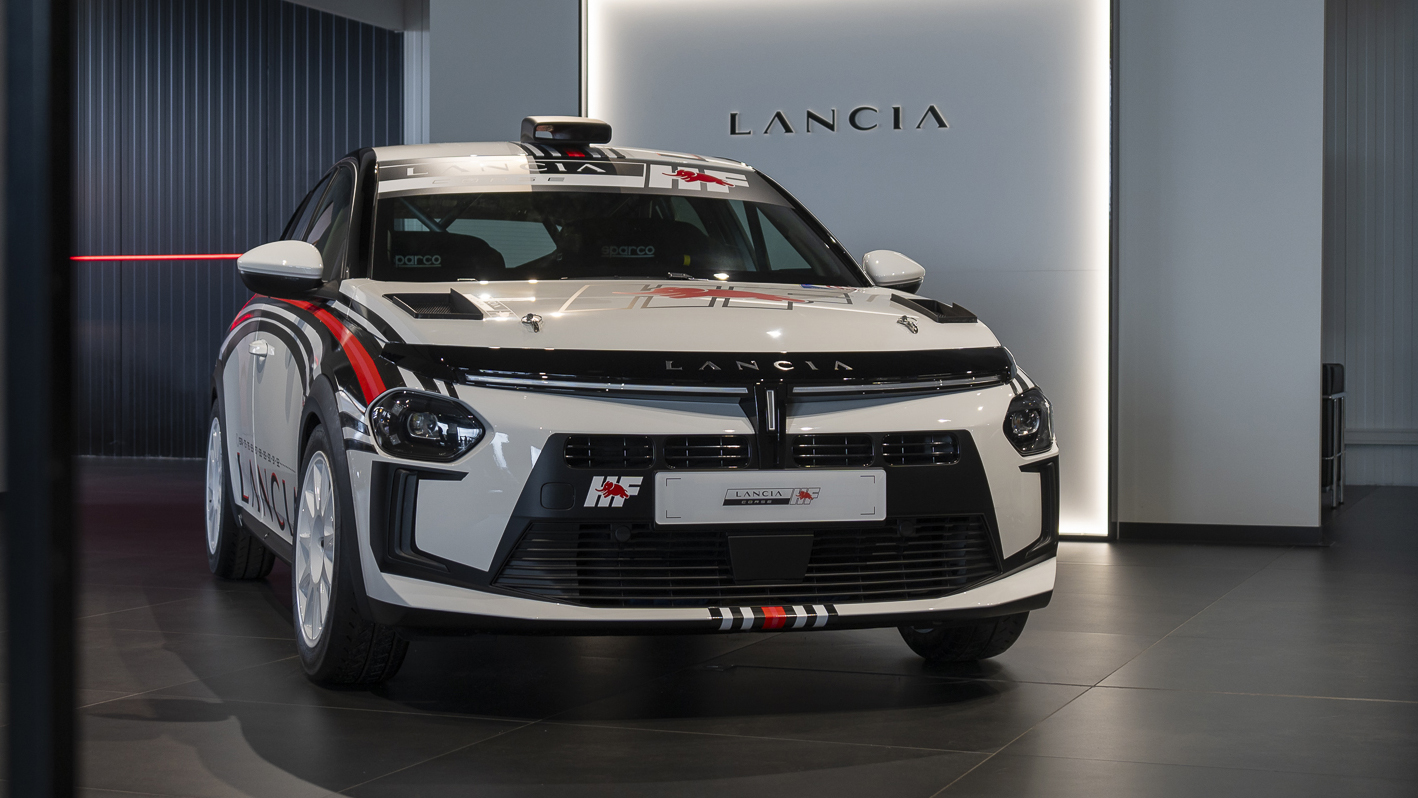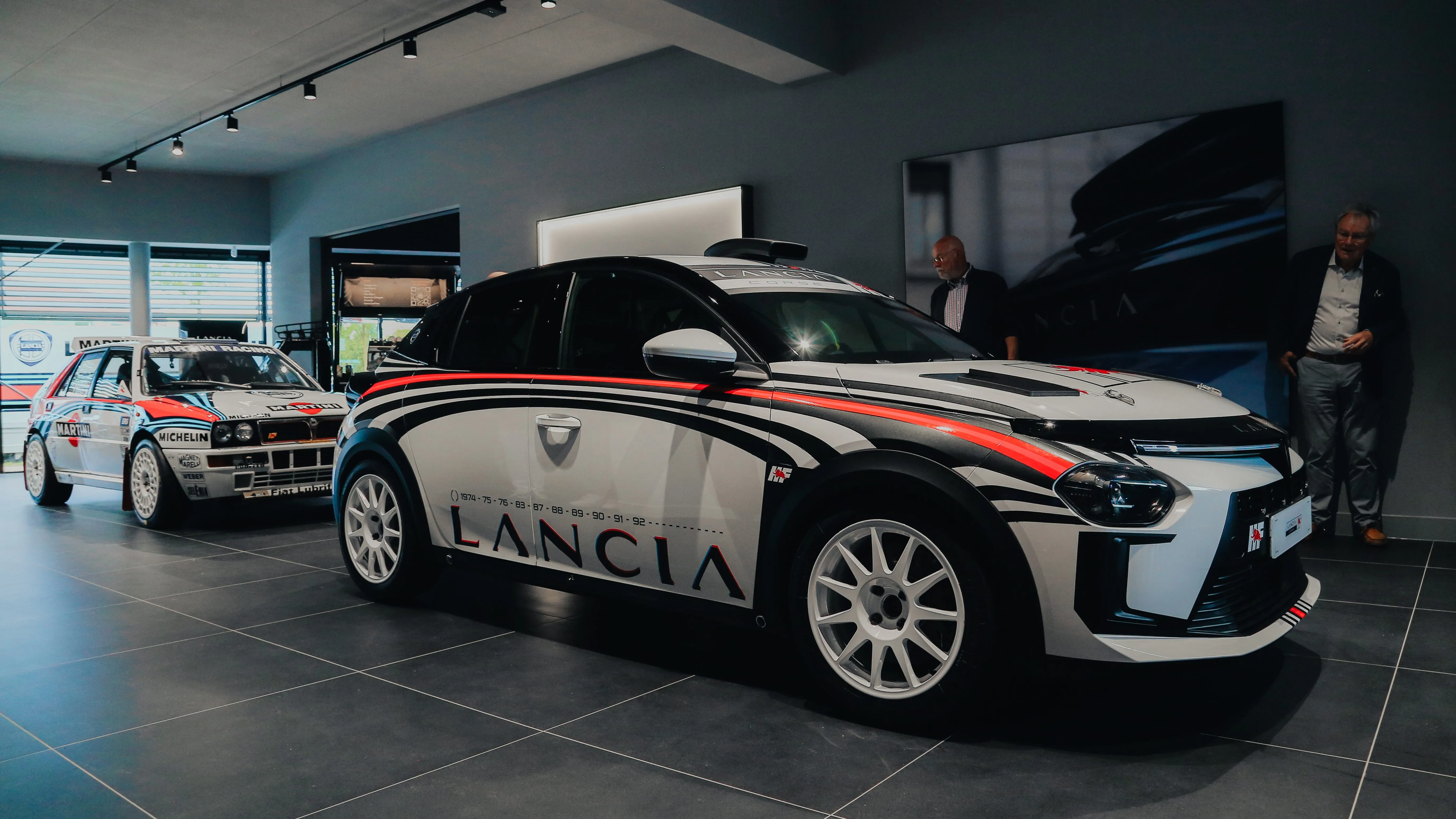

The Lancia Ypsilon HF is a compact electric car sold in Europe that, I’m guessing, even the nerdiest among you don’t care all that much about. But the new Ypsilon Rally 4 HF, which is bringing the Italian automaker back to rally racing, is pretty darn cool.
Lancia has a long and impressive history with rally. Cars like the Stratos Stradale, 037, and of course, Delta Integrale are still consistently car-fan favorites for their distinctly of-era looks and impressive performance. Classic Driver has a good little primer on those three if you’re unfamiliar, or you can read the reviews I linked to here on The Drive.
There’s a three-part docuseries called “Lancia. The rallying legend” that aired on Sky Documentaries and NOW last year which apparently did a comprehensive history of the brand’s rally racing campaigns. I really want to watch it, but alas, haven’t been able to find a good link for it yet. If you know where we can see it, please make it known in the comment section!





Anyway, this month, Lancia is using the rally car’s debut to make some noise about opening dealerships in Belgium, Luxembourg, and The Netherlands. So if anybody’s reading this from one of those nations, hey, congrats. You might be able to see the race car in person while somebody tries to sell you a new Ypsilon HF.
One more bit of context and then we’ll circle back to the new race car’s details … “HF,” as in High Fidelity, has been Lancia’s moniker for its spicier model variants since the 1960s. An old archived Geocities site I found referenced on a Lancia forum has this nugget of history [sic] which I found pretty interesting:
The HF symbol, the contraction of High Fidelity, owes its origin to the Lancia Hi. Fi. Club, which draws its members from loyal Lancia clients according to strict rules of eligibility which govern membership. The Club was founded in 1960 and the HF was taken as its logo.
The transposition of the Initials H and F on certain sports cars followed in 1961, when customers started to race Flaminia Pinina Farina in Grand Tourism events.
The “consecration” came with the launch of the legendary Fulvia coupe, and it became the official logo of the Company’s sports cars, starting with the 1966 Fulvia HF coupe which remained almost unbeatable on the world rallies, until the mythical Stratos appeared on the scene to dominate rallying from 1974 – 1978.
In the mean time the HF Racing Team had been founded in 1963, initially as a simple association of amateur drivers unofficially backed by Lancia, but becoming the official sporting branch of the Company in 1965.
The HF symbol was adopted again in 1983 for the Delta turbo and thereafter on the Delta 4WD and the Integrale. With the introduction of the Evolution model of the Integrale, the letters were combined with the galloping red elephant. The elephants had been on the original badges for the Fulvia HF and the Stratos, at that time there were four elephants displayed.
There are contrasting stories and legends regarding the origin of this elephant, including the simple “the elephant never forgets”. We do know that in 1953 the then Managing Director of Lancia, Gianni Lancia, chose it as a good luck token for the Company’s first racing appearances. The symbol of the galloping elephant apparently originates in Eastern mythology as an auspicious emblem or symbol of victory, providing the trunk is stretched forward. This is how the elephant chosen by Gianni Lancia was drawn, first in light blue and later as now in bright red.

The 2024 Lancia Ypsilon HF will be the first electric car to get the HF emblem. It claims 237 horsepower, like the Fiat Abarth 600e and Alfa Romeo Junior Veloce, with which it shares Stellantis’ Common Modular Platform (CMF). It is effectively Lancia’s first new hot hatch in a very long time.
The race car, however, is a little more old-school with a tiny engine and five-speed manual transmission. The Ypsilon Rally 4 HF has a 1.2-liter three-pot, turbocharged, claiming 212 horsepower(!). It’s got front-wheel drive and a mechanical limited-slip diff. And soon, it’ll be racing.
Italian rally driver Miki Biasion (I’ll embed a neat little doc about him below) is credited with helping determine the car’s set-up, brakes, and engine calibration.

The new rally car’s jellybean shape doesn’t feel quite as strikingly intense as the old washing machine-styled Delta Integrale, but surely it’ll look better with some mud on it. As far as I’m concerned, it’s just cool to see manufacturers give a dang about rally at all in 2024. Requiring a lot of skill and even more bravery, it really is one of the wildest flavors of motorsports humanity has come up with.
Here’s hoping we can watch it on-course somewhere soon.

Got a tip? Drop us a line tips@thedrive.com.